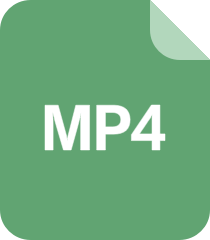Implementing HTTP File Download in LabVIEW
发布时间: 2024-09-14 21:29:01 阅读量: 20 订阅数: 24 


Implementing Counters in LabVIEW FPGA 中英双字幕
# 1. I. Introduction
LabVIEW is an integrated system design platform and development environment developed by National Instruments in the United States. It is a graphical programming language primarily used in the fields of control, measurement, and data acquisition. In LabVIEW, users can construct program logic by dragging and dropping different modules, eliminating the need for traditional text-based coding.
HTTP file downloading plays a crucial role in modern network communication. Through the HTTP protocol, users can conveniently and quickly access various resources on the internet, such as documents, images, videos, and more. Implementing HTTP file downloading functionality can provide LabVIEW users with more flexible data acquisition methods, while also expanding the application scope of LabVIEW in the field of network communication. In this article, we will explore how to implement HTTP file downloading in LabVIEW, along with its background and importance.
# 2. II. Preparations
A. Ensure LabVIEW is installed and configured.
B. Understand the basics of the HTTP protocol.
# 3. III. Basic Steps to Implement HTTP File Downloading
In this chapter, we will introduce the basic steps to implement HTTP file downloading, covering the process of creating HTTP requests, sending HTTP requests, and receiving and processing server responses. By following these steps, you will gain a clear understanding of how to implement HTTP file downloading in LabVIEW.
# 4. IV. Specific Steps to Implement HTTP File Downloading in LabVIEW
In this section, we will delve into the specific steps to implement HTTP file downloading in LabVIEW, including using LabVIEW's HTTP toolkit, configuring HTTP request parameters, and parsing and processing server responses.
#### A. Using LabVIEW's HTTP Toolkit
1. First, open a new VI (Virtual Instrument) in LabVIEW and ensure that the LabVIEW HTTP toolkit is installed.
2. Right-click on the Block Diagram, select "Functions" -> "Internet," then choose "Web Services," where you can find the relevant functions of the HTTP toolkit.
3. Add and configure the functions in the HTTP toolkit, such as "Open Handle.vi" for establishing an HTTP connection and "Download File.vi" for file downloading.
#### B. Configuring HTTP Request Parameters
1. Use the "Open Handle.vi" function to establish an HTTP connection, inputting server addresses, port numbers, and other information.
2. Use the "Download File.vi"
0
0





